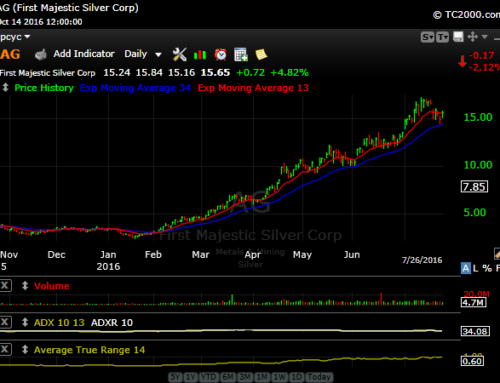 Most investors think that portfolio diversification means spreading your bets among a diverse portfolio of stocks, and then maybe add some bonds into the mix.
Most investors think that portfolio diversification means spreading your bets among a diverse portfolio of stocks, and then maybe add some bonds into the mix.
The standard portfolio mix is 60% stocks and equity mutual funds and 40% bonds.
The problem with this idea is that when the stock market goes into a bear market, about 75% of all stocks will decline at least as much as the overall market.
Another problem is that when the market goes up, it’s a minority of stocks that are driving the gains in the market. If you don’t own them at the time, you will have mediocre returns.
Lastly, bonds don’t provide much in the way of protection either. While you may be collecting an interest coupon payment, the value of the bond can also decline, especially during times of high inflation.
In not to distant memory, I was not a fan of the futures markets as a means for portfolio diversification. The issue was mainly that the futures markets are too volatile, and the leverage involved required too much capital to trade in these markets to benefit from diversification.
New smaller sized contracts provide greater accessibility to futures markets
 However, new futures contracts have been created in a variety of markets that can allow investors who do not have million dollar portfolios to participate while maintaining risk at appropriate levels.
However, new futures contracts have been created in a variety of markets that can allow investors who do not have million dollar portfolios to participate while maintaining risk at appropriate levels.
The futures markets offer excellent opportunities for diversification because many of the markets will move in a direction that is not necessarily correlated to the direction of the stock market.
Furthermore, it is easier to sell short in the futures markets, since you don’t have to borrow shares from your broker to sell short. For every futures contract, there is someone holding the opposite position.
Over the last several years, new micro sized contracts have been created so that smaller investors have better access to these markets.
There are micro sized contracts for the S&P 500 futures, gold, silver, and the major currency futures, such as the Euro, British Pound and others.
Additionally, there are mini sized contracts that can be traded in the grain markets for soybeans, corn and wheat.
There are also some less volatile markets such as Sugar, and the Treasury futures at the short end of the curve, such as the 2 Year Note and 5 Year Note. If you put all of these markets together, you have a reasonably diverse portfolio.
This diversification is necessary to gain the clear benefit to an investment portfolio. The primary reason that an investor should want to trade in these markets is to exploit the significant moves that come along from time to time.
Quite often, when the stock market is experiencing turbulence, you will get significant moves in the currencies, precious metals and Treasury futures.
By exploiting these moves, you can at least partially offset some of the declines in your stock market portfolio.
How to trade futures
There are thousands of ways to trade futures. Some trading firms seek to capture trends that last for several years, while others actually hold positions for mere seconds.
As I said, the best way to benefit from trading futures is to have the ability to exploit significant trends that may occur from time to time.
In 2020, we’ve seen significant moves in gold, silver, copper, some of the currencies, crude oil, and even soybeans.
This chart is the January 2021 Soybean contract going back about one year. Traders who employ a “trend following” strategy look to exploit the trend that has occurred since late August.
The key is to have a strategy in place to exploit such moves. Such a strategy will tell you when to enter a long or short position, how many contracts to trade, when to exit if the trade does move in your favor, and when to exit a profitable trade.
You’ll also need to be disciplined enough to follow the strategy no matter what, provided that you’ve done the research needed to have confidence in the strategy to begin with.
Ultimately, trading futures should be treated as a business. You need to develop a plan, and stick with the plan. You’ll need the discipline (and trading capital) to deal with losses, as there is no getting around losing trades.
The key to successful trading is to make more money on your winning trades than you lose on your losing trades.
Some successful traders suggest they are only profitable on 30% to 40% of their trades. They are profitable because they ultimately make at least 3 times more on their winning trades or more, than they lose on their losing trades. It’s math. Most people are not wired to deal with that.
Some investors choose to hire a Commodity Trading Advisor to do all this for them. However, there are usually significant fees to be paid, and account minimums are often quite high… upwards of $1 million for an individual managed account.
Learn more about trading here.
Keep in mind… FUTURES TRADING INVOLVES SUBSTANTIAL RISK, AND IS NOT SUITABLE FOR ALL INVESTORS.
Good luck!






Leave A Comment